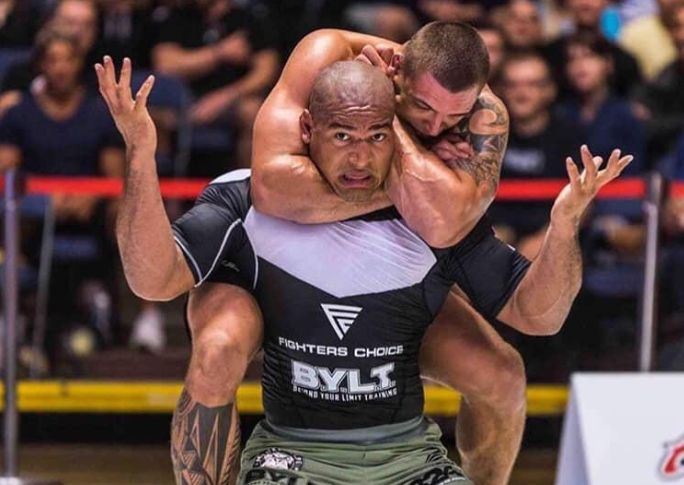
BJJ is a highly competitive sport, with hundreds of Jiu-Jitsu tournaments held every year around the world. But how do you determine who wins a Brazilian Jiu-Jitsu match? Well, via a BJJ points system of course. But which one is the best one?
Unlike other combat sports, such as boxing or MMA, where the winner is decided by knockout, technical knockout, or judges’ decision, BJJ matches are ideally decided by submission. A submission is when one competitor forces the other to give up by applying a choke or a joint lock that causes pain or threatens injury. The competitor who submits his or her opponent wins the match.
However, not every BJJ match ends with a submission. Sometimes, both competitors are equally skilled and resilient, and neither one can finish the other within the time limit. In that case, how do you decide who wins?
This is where the BJJ points system comes in.
What Is A BJJ Points System?
The BJJ points system is a way of scoring a Jiu-Jitsu match based on the positions and actions (or inactions) of the competitors. The points system awards points for achieving and maintaining certain dominant positions, as well as for performing certain moves that lead to those positions.
The points system also penalizes competitors for committing certain infractions, such as stalling or using illegal techniques. At the end of the match, the competitor with the most points wins.
But why do we need a points system in BJJ? Why not just let the match continue until someone submits? Well, there are several reasons for having a points system in BJJ tournaments.
- First of all, having a points system ensures that there is always a clear and objective winner in every match. Without a points system, there would be too many draws and controversies over who performed better.
- Second, using a points system encourages competitors to be more active and aggressive, rather than just playing it safe and waiting for an opportunity to submit.
- Third, a precise points system rewards competitors for demonstrating technical skills and positional control, which are essential aspects of BJJ.
- Fourth, utilizing a specific scoring system makes grappling matches more exciting (arguably) and engaging for spectators and fans.
But not all BJJ tournaments use the same points system. Different organizations have different rulesets and scoring systems for their events. Some of the most popular and influential organizations in BJJ are:
- International Brazilian Jiu-Jitsu Federation (IBJJF)
- Abu Dhabi Combat Club (ADCC)
- Submission Only Tournaments (EBI)
- UAE Jiu-Jitsu Federation (UAEJJF)
Each of these organizations has its own unique points system that reflects its philosophy and vision of BJJ. The goal of this article is to compare and contrast these different points systems and try to answer the question: what is the best BJJ points system?
Understanding the BJJ Points System
Before we dive into the details of each organization’s points system, let’s first define some key terms and concepts that are common to all of them.
Position
A position in BJJ is a way of describing how two competitors are arranged on the ground in relation to each other. Positions can be classified into two main categories: bottom and top positions.
Guard is the quintessential bottom position that is not defensive. In guard, one competitor (the bottom player) lies on his or her back or side and uses his or her legs to control the distance and the other competitor’s movements. Guard is considered a neutral position, as both competitors have offensive and defensive options from there.
Top position refers to all positions during which one competitor (the top player) succeeds in passing the guard of the other competitor (the bottom player) and establishes control over the opponent’s torso, hips, and/or the opponent’s head. Side control, knee on belly, mount, and back control are the most often utilized top positions.
There are many variations and subtypes of guards and top control positions in BJJ, such as closed guard, open guard, half guard, high/low/middle mount, straight jacket back mount, north-south position, Kesa Gatame, etc. Each position has its own advantages and disadvantages, depending on the situation and the skill level of the competitors, and some of them score four points (which is the maximum(.
Control
Control in BJJ is when one competitor maintains a position over the other competitor for a certain amount of time without losing it or allowing any significant movement or escape. Control is usually achieved by using pressure, weight distribution, grips, hooks, etc.
Control is important for scoring points in BJJ because it shows that one competitor has successfully established dominance over another. Controlling someone also creates opportunities for submission attempts or transitions to more dominant positions.
Transitions
A transition in Brazilian Jiu-Jitsu is when one competitor changes from one position to another position during a match. Transitions can be offensive or defensive, depending on whether they improve or worsen one’s situation.
Transitions are important for scoring points in BJJ because they show that one competitor has successfully performed a move that leads to a more dominant position or escapes from an inferior position.
Submission(s)
A submission is when one competitor forces the other competitor to give up by applying a choke or a joint lock that causes pain or threatens injury. The competitor who submits his or her opponent wins the match.
Submissions are important for winning in grappling because they are the ultimate goal and objective of every match. Submissions also show that one competitor has successfully applied his or her technical abilities and knowledge to finish the match.
The IBJJF scoring system is used by the International Brazilian Jiu-Jitsu Federation (IBJJF), which is the most prominent and influential BJJ organization in the world. The IBJJF organizes hundreds of tournaments every year across different continents and countries, such as the World Championships, Pan American Championships, European Championships, etc.
The IBJJF scoring system awards points for achieving and maintaining certain dominant positions and performing certain moves that lead to those positions. The system also penalizes competitors for committing certain infractions, such as stalling or if an athlete attempts to perform illegal techniques.
Here is a brief overview of how you can score points under the IBJJF rules
- Takedown: 2 points
- Sweep: 2 points
- Guard pass: 3 points
- Knee-on-belly: 2 points
- Mount: 4 points
- Back mount/back control: 4 points
To score points in IBJJF competitions, you must first gain control of your opponent for at least 3 seconds after performing a move or achieving a position. If you lose control before 3 seconds have passed, you will not score any points.
You can also score advantage points under the IBJJF scoring system if you almost score regular points or almost finish a submission attempt. For example, if you get a mount position but your opponent escaped before 3 seconds have passed, you will get an advantage point instead of 4 regular points. Advantage points are only used to decide the winner if both competitors have equal regular points at the end of the match.
You can also receive penalty points under the IBJJF rule set if you commit certain infractions during the match. For example, if you stall or avoid engaging with your opponent for too long without attempting any offensive moves, you will receive penalty points. Negative points, as opposed to positive points, are deducted from your regular point total at the end of the match.
The IBJJF scoring system favors when an athlete controls position over submission attempts because it rewards competitors for demonstrating technical skills and achieving dominant positions over their opponents. IBJJF also promotes safety and sportsmanship because it penalizes competitors for using illegal techniques or behaving unsportsmanlike during matches.
However, some critics argue that the IBJJF scoring system also has some drawbacks and limitations. For example:
- The IBJJF scoring system discourages leg attacks because it bans many leg locks (such as heel hooks) and penalizes some entanglements involving the opponent’s leg (such as reaping which is wrapping a triangle around one of your opponent’s thighs) under its rules, discouraging submission hunting in the process.
- The system also penalizes certain techniques that are considered valid and effective in other grappling arts (such as wrestling or Sambo), rulesets, or self-defense scenarios (such as slamming).
- The biggest issue with an IBJJF tournament is that it is prone to controversies and inconsistencies because it relies on referees who may make mistakes or have biases when judging matches.
ADCC Scoring System
The ADCC scoring system is used by the Abu Dhabi Combat Club (ADCC), which is the most prestigious and challenging no-gi grappling event in the world. The ADCC organizes a biennial tournament that invites the best grapplers from different disciplines, such as BJJ, wrestling, Judo, Sambo, etc.
The ADCC scoring system, similar to the IBJJF, awards points for achieving and maintaining certain dominant positions and performing certain moves that lead to those positions. It also penalizes competitors for committing certain infractions, mostly about stalling.
Here is a brief overview of how you can score points under the ADCC scoring system:
- Takedown: 2 points if you land in the bottom person’s guard /4 points If you land past the bottom person’s guard.
- Sweep: 2 points if you land in the bottom person’s guard /4 points If you land past the bottom person’s guard.
- Knee-on-belly position: 2 points
- Guard passing: 3 points
- Mount: 2 points
- Back mount/back control: 3 points
To score points under the ADCC scoring system, you must first gain control of your opponent for at least 3 seconds after performing a move or achieving a position. If you lose control before 3 seconds have passed, you will not score any points.
However, unlike the IBJJF scoring system, the ADCC scoring system does not award any points during the first half of the match. This means that for the first 5 minutes of a 10-minute match, or the first 10 minutes of a 20-minute match, no points are given or taken. The only exception is if one competitor submits the other during this period.
The reason for this rule is to encourage competitors to go for successful submissions rather than playing it safe and stalling for points. The ADCC scoring system also allows more freedom and diversity of techniques than the IBJJF scoring system, as it does not ban or penalize any leg locks or leg entanglements that are considered illegal or dangerous by the IBJJF.
The ADCC scoring system favors submission attempts over positional control because it rewards competitors for being aggressive and creative rather than conservative and passive.
ADCC attracts top-level grapplers from different backgrounds and styles because it allows more flexibility and variety of techniques than the IBJJF scoring system.
However, some critics argue that the ADCC scoring system also has some drawbacks and limitations. For example:
- The ADCC scoring system is somewhat complex and confusing because it has different rules and criteria for different phases of the match.
- ADCC matches favor wrestlers and takedown specialists because the system awards more points for takedowns (potentially).
- The ADCC scoring system discourages guard playing because it does not award any points for pulling guard or maintaining guard. In fact, guard pulling is banned in certain phases of a match.
- Finally, the ADCC points system is prone to stalling and inactivity because it does not award any points during the first half of the match, which often ends up being somewhat boring due to docile tactics.
Submission Only Tournaments Scoring System(s)
The submission-only BJJ point system is used by various organizations that promote a different approach to BJJ competition. Some of the most popular and notable ones are:
- Eddie Bravo Invitational (EBI)
- Fight To Win (FTW)
- Kasai Pro
The submission-only scoring system does not award any points for achieving or maintaining any positions or performing any moves. The only way to win a match under this system is to submit your opponent. If neither competitor submits the other within the time limit, there are different ways to decide the winner depending on the organization.
Some organizations use a panel of judges to decide the winner based on who was more dominant, effective, offensive, etc. For example, FTW uses this method to determine the winner of its matches.
EBI has the most optimal ruleset according to fans and participants alike. It uses overtime rounds to decide the winner based on who can finish their opponent from a predetermined position faster. Even if this method doesn’t yield a winner, EBI uses the concept of the fastest escape time (who escaped faster) to determine a clear winner.
Other organizations use a hybrid system that combines elements of different methods to decide the winner. Kasai Pro, as an example, uses this method to determine the winner of its matches.
The submission-only scoring system encourages submission hunting over positional control because it rewards competitors for finishing their opponents rather than accumulating points. Such tournaments help eliminate disputes and controversies over who performed better because it does not rely on human referees or judges to decide the outcome. It also appeals to spectators and fans more because it creates more excitement and drama than point-based matches.
There are, of course, critics who point to some cons of submission-only matches, like:
- The submission-only scoring system(s) lacks clear criteria and standards because it does not have any objective measures of performance or achievement.
- It favors submission specialists over well-rounded grapplers because it does not reward any other aspects of BJJ besides submissions.
- This BJJ points system discourages positional control to an extent because it does not reward any advantages gained by superior positioning.
UAEJJF (AJP) BJJ Points System
The UAEJJF scoring system is used by the UAE Jiu-Jitsu Federation (UAEJJF), which is a growing and innovative BJJ organization that organizes tournaments in the United Arab Emirates and other countries, such as the Abu Dhabi Grand Slam and the Abu Dhabi World Professional Jiu-Jitsu Championship.
The UAEJJF scoring system is an off-shoot of the IBJJF system, with several slight differences worth mentioning.
Here is a brief overview of how you can score points under the UAEJJF scoring system:
- Takedown: 2 points
- Sweep: 2 points
- Knee-on-belly: 2 points
- Guard pass: 3 points
- Mount: 4 points
- Back mount/back control: 4 points
- Advantage: 1 point
The same 3-second rule that IBJJF and ADCC BJJ point systems use apply to positions and transitions under UAEJJF rules as well. If a sweep attempt lands you on top for less than 3 seconds, you only get an advantage point
This system is different from others in that it offers a point awarded per advantage, which is usually a way to show that someone almost managed to do something worth points, like finishing a submission or achieving and controlling the most dominant position.
The UAEJJF scoring system also uses a video assistant referee (VAR) for accuracy and fairness in judging matches.
This is a source of some criticism from some folks, as the UAEJJF scoring system’s awarded points for advantages allow people to win by almost pulling things off.
Other Important Rulesets
Besides the four main rulesets that we have discussed so far, there are other BJJ rulesets that are not based on points but on different criteria or formats. Some of the more popular or notable ones BJJ points system variations out there are:
- Who’s Number One (WNO): a submission-only event that features gi and no-gi matches with 15-minute time limits. If there is no submission, a panel of judges decides the winner based on who was more aggressive, offensive, creative, etc.
- Polaris: a professional grappling event that features gi and no-gi matches with different time limits depending on the belt level. If there is no submission, a panel of judges decides the winner based on who was more dominant, effective, etc.
- North American Grappling Association (NAGA): a grappling tournament that features gi and no-gi divisions with different rulesets depending on the skill level. The beginner divisions use a modified IBJJF scoring system with some differences. The intermediate divisions use a similar system but with more techniques allowed. The expert divisions use a submission-only format with overtime rounds if needed.
- Grapplefest: a professional grappling event that features no-gi matches with 15-minute time limits. If there is no submission, a panel of judges decides the winner based on who was more dominant, effective, etc.
These rulesets offer different challenges and alternative opportunities for BJJ practitioners who want to test themselves in different scenarios and environments. They also showcase different aspects and dimensions of grappling that may not be fully expressed or appreciated under point-based rulesets.
The Verdict
In this article, we have compared and contrasted four different BJJ points systems (IBJJF, ADCC, Submission Only, UAEJJF) and their implications for BJJ practitioners. We have also mentioned some other important rulesets that are not based on points but on different criteria or formats.
Each ruleset has its own advantages and disadvantages, depending on your goals, preferences, style, and skill level.
Based on that, we can offer some general guidelines and recommendations based on our experience and logic:
- If you want to compete in the most popular and widely recognized tournaments in BJJ, you should learn and master the IBJJF/UAEJJF scoring systems.
- If you want to compete in the most prestigious and challenging no-gi grappling event in BJJ, you should learn and master the ADCC scoring system.
- If you want to compete in a pure submission-based format that eliminates any doubts or disputes over who performed better, you should learn and master the Submission Only scoring system.
If we had to pick one BJJ points system to use for everyone, that would be engaging, fun, and fair, it would have to be the middle ground between the rigidity of IBJJF/UAEJJF and the complete freedom that submission-only rulesets offer. That comes in the form of the ADCC ruleset, which should be the golden standard of Jiu-Jitsu competitions.
Everyone that would like to specialize in either submission-only or IBJJF/UAEJJF types of rules, can do so after spending some time competing under ADCC rules.
Ultimately, the best way to improve your BJJ game is to train hard, learn from your mistakes, adapt to different situations, and have fun. No matter what ruleset you choose to compete under, remember that BJJ is more than just a sport or a martial art. It is a lifestyle and a journey of self-discovery.
Thank you for reading!


![Darce Choke Encyclopedia – Origins, Mechanics and Variations [2025] BJJ, choke, Brabo, BJJ Darce Choke, D'arce Choke, Darce BJJ Choke](https://bjj-world.com/wp-content/uploads/2017/11/JungPoirierLeeYahoo-218x150.jpg)







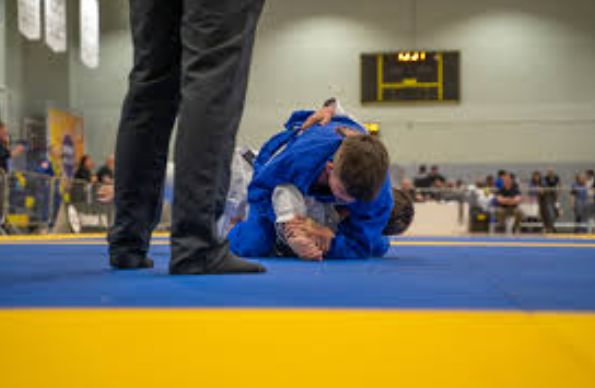
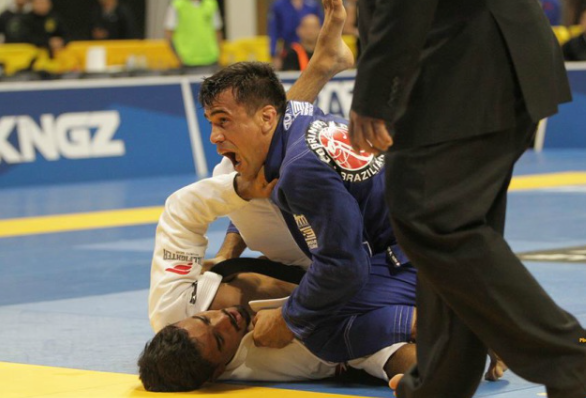
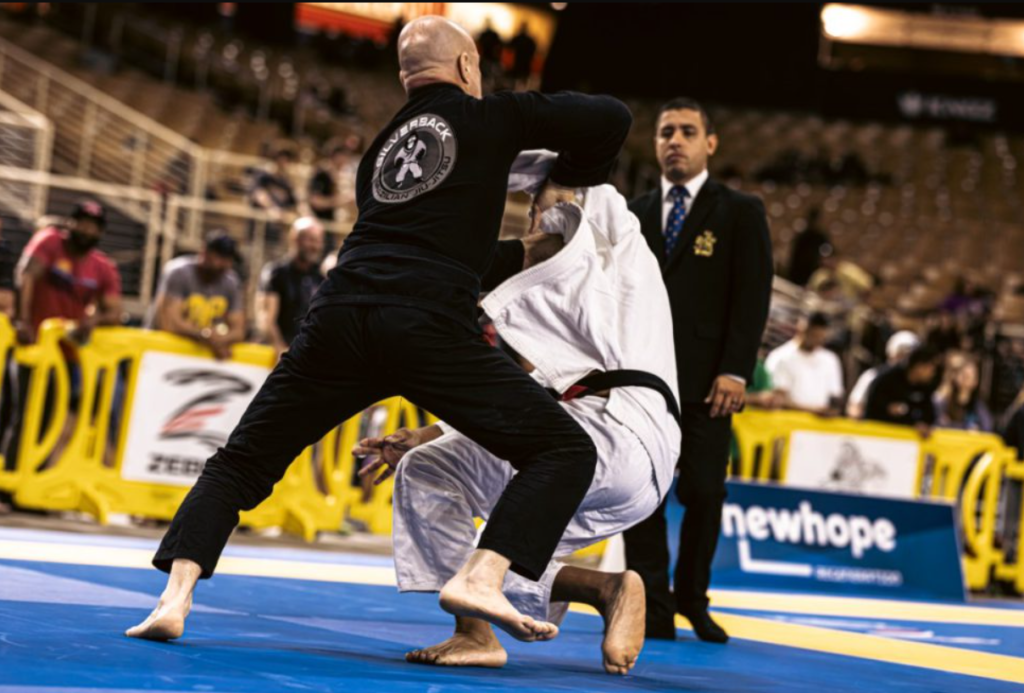
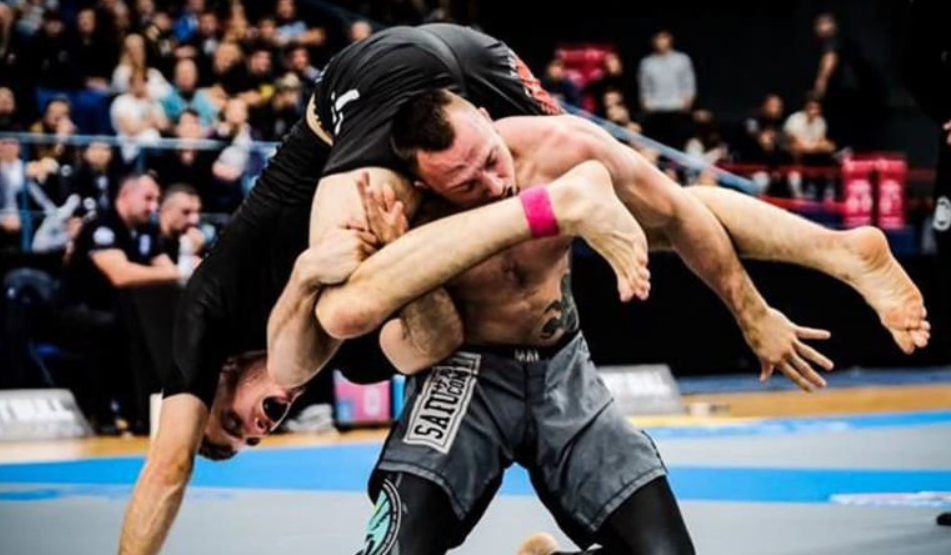

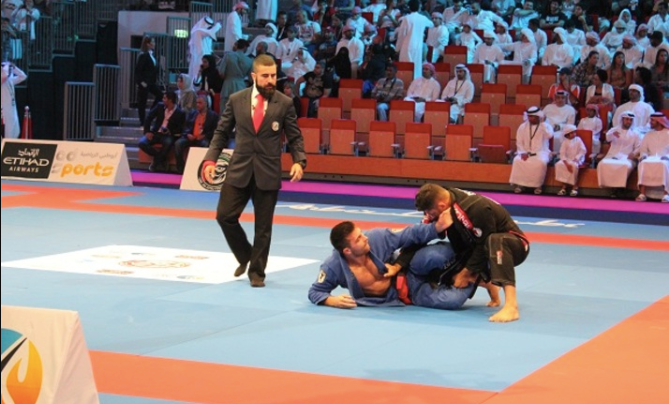






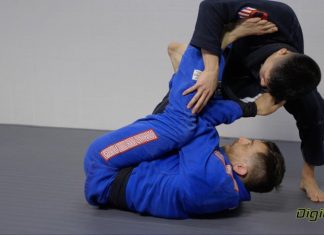


![Roger Gracie Guard Passing System DVD Review [2025] Roger Gracie Guard Passing System DVD Review](https://bjj-world.com/wp-content/uploads/2025/02/roger-gracie-guard-passing-system-dvd-review-100x70.png)
![Best Marcelo Garcia Techniques by Team Marcelo Garcia DVD Review [2025] Best Marcelo Garcia Techniques by Team Marcelo Garcia DVD Review](https://bjj-world.com/wp-content/uploads/2025/02/best-marcelo-garcia-techniques-dvd-review-100x70.png)


![A Blueprint For Smeshing Khabib Nurmagomedov DVD Review [2024] A Blueprint For Smeshing Khabib Nurmagomedov DVD Review](https://bjj-world.com/wp-content/uploads/2024/10/blueprint-for-smeshing-khabib-nurmagomedov-dvd-review-100x70.png)


![Jeff Glover DVD Bundle Review: Chokin’ Around With Uncle Jeff [2024] Jeff Glover DVD Bundle Review: Chokin' Around With Uncle Jeff](https://bjj-world.com/wp-content/uploads/2024/10/jeff-glover-dvd-bundle-review-chokin-around-100x70.png)
![Kill The Underhook Dima Murovanni DVD Review [2024] Kill The Underhook Dima Murovanni DVD Review](https://bjj-world.com/wp-content/uploads/2024/10/kill-the-underhook-dima-murovanni-dvd-review-100x70.png)





![Mastering The Crucifix Alexandre Pereira DVD Review [2025] Mastering The Crucifix Alexandre Pereira DVD Review](https://bjj-world.com/wp-content/uploads/2025/01/mastering-the-crucifix-alexandre-pereira-dvd-review-100x70.png)

![Daisy Fresh WHITE BELT Wrestling Curriculum DVD Review [2024] Daisy Fresh WHITE BELT Wrestling Curriculum DVD Review](https://bjj-world.com/wp-content/uploads/2024/10/daisy-fresh-white-belt-wrestling-curriculum-review-100x70.png)



![Effectively Passing The Guard Luke Griffith DVD Review [2025] Effectively Passing The Guard Luke Griffith DVD Review](https://bjj-world.com/wp-content/uploads/2025/01/passing-the-guard-luke-griffith-dvd-review-100x70.png)
![Just Pass Jay Rodriguez DVD Review [2024] Just Pass Jay Rodriguez DVD Review](https://bjj-world.com/wp-content/uploads/2024/11/just-pass-jay-rodriguez-dvd-review-100x70.png)

![Simplify the System Side Scissor Brian Glick DVD Review [2024] Simplify the System Side Scissor Brian Glick DVD Review](https://bjj-world.com/wp-content/uploads/2024/09/side-scissor-brian-glick-dvd-review-2024-100x70.png)
![Countering Triangles And Omoplatas Adam Mazin DVD Review [2024] Countering Triangles And Omoplatas Adam Mazin DVD Review](https://bjj-world.com/wp-content/uploads/2024/10/countering-triangles-and-omoplatas-adam-mazin-dvd-REVIEW-100x70.png)